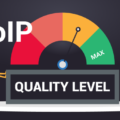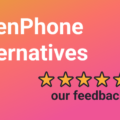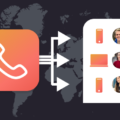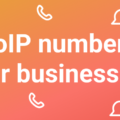Running a call center efficiently can be a tough task – you can have dozens of employees working in shifts, handling several clients at the same time. If your team doesn’t have the necessary tools to collaborate and make the whole process run smoothly, you’re running the risk of losing money and customers.
That’s why many companies opt for VoIP business phone systems – more advanced and efficient than traditional landlines, these tools are developed to make your agents more productive and their jobs easier.
In this article, we will be going through some of the most important facts about call centers, VoIP business phone systems, as well as the most important reasons you should have a VoIP call center.
What is a VoIP business phone system?
VoIP stands for Voice over Internet Protocol, which means that these systems carry your voice using an Internet connection. Its advantages are obvious – you can use VoIP systems to broadcast much more than just voice (Skype is a popular VoIP software, and it’s world-renown for video calling) and you won’t be limited by a set number of minutes, which is the case with most landlines.
On the other hand, the quality of your VoIP calls depends on your Internet connection, which means you can run into some issues. To avoid this, we recommend checking your Internet speeds and seeing if you need to invest in a better Internet package before you purchase a VoIP for your call center phones.
Overall, VoIP phone systems are considered a modern upgrade of the traditional landlines and they’re used by call centers all over the world to make their teams run more efficiently.
Inbound vs outbound VoIP call center
Depending on their industry, people employed, and the nature of their tasks, there are several types of call centers. Usually, the most important distinction is between inbound and outbound call centers. These two types will normally look for different features in their VoIP providers, so it’s important to know the difference.
Inbound call centers receive calls from customers. Their main objective is to be available, helpful, and empathetic, as they usually have to process customer inquiries that deal with issues, payments, or technical questions.
Some of the most popular inbound call centers are:
- Tech support – if users can’t access their profiles, need to change their passwords, or they’re having issues with their online payments, they’re often instructed to call a tech support call center.
- Telephone customer service – when users receive a faulty product or would like to inquire about a product before purchasing, they usually call Customer Service. Although Social Media and website inquiries are getting more popular, phone conversations are much more convenient for certain issues.
- Reclamation – customers that are dissatisfied with a certain product or service typically revert to phone calls as their preferred way of contacting the company. Agents that deal with these inquiries could make great use of a call recording software that enables automatic call recording, to make sure all calls are saved and can’t be used against them.
Outbound call centers, on the other hand, make outbound calls to either existing or potential customers. Sales teams are a classic example of an outbound call center, often cold calling potential users and generating leads.
Here are some popular examples of outbound call centers:
- Telemarketing – much like door-to-door salespeople, telemarketers sell their products or service to strangers, only via phone. And, although this industry has a somewhat bad reputation, research shows that it’s been growing in the past five years.
- Market research – companies often use outbound call centers to better understand market trends and their competitors. With the results of this research, companies then improve their products, design, or marketing messages.
- Lead generation – outbound call centers can help the sales team by identifying leads and mapping customer journeys. Much more than simply making a sale, these teams can identify opportunities and assess how far away leads are from making a purchase.
In-house vs outsourced VoIP call center
A common dilemma for a lot of companies is whether to hire an in-house call center or to outsource the work to a company specialized in this service. Both of these options come with their pros and cons, and whether you’ll go with one or the other largely depends on your finances, goals, and the very nature of your business.
In-house call centers have the obvious benefits of total control over staff and the whole process. You can screen candidates, train them, and monitor their performance. Having an in-house telephone customer service also means they’ll have more knowledge about your brand and products, which is not the case with outsourced call centers who are often misinformed.
Outsourced call centers, however, tend to be a far more affordable option. There is virtually no overhead cost and no infrastructure from your side, both of which can be very costly if you’re running an in-house team. The staff is usually well-trained and easily scalable.
The main downside of an outsourced call center is lack of control and a very popular concern – language differences. As these centers are often situated in a foreign country, there is a chance some of the agents that end up working for you lack the cultural knowledge or language fluency to represent your brand in the best possible way.
Which VoIP call center software should you use?
Depending on the size of your business, your budget, and various other factors, certain VoIP providers might suit you better than others. Most of them target specific market segments and offer features tailored to those segments.
Here are some providers we believe offer a pretty versatile service for small and large businesses alike.
Ringblaze
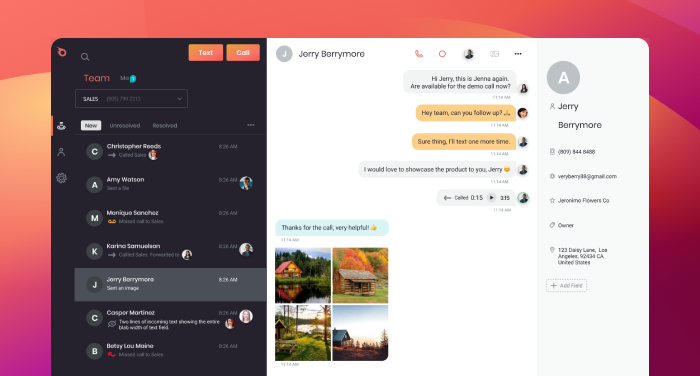
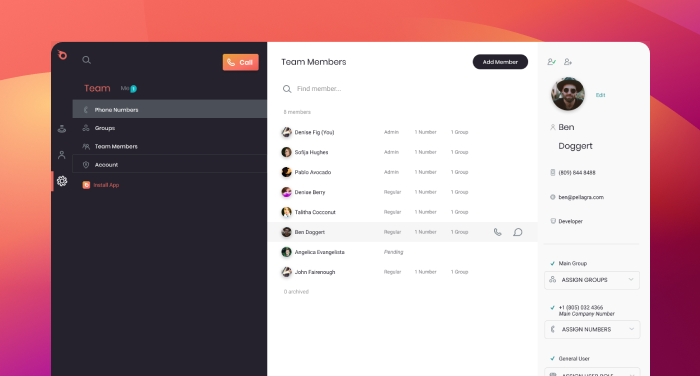
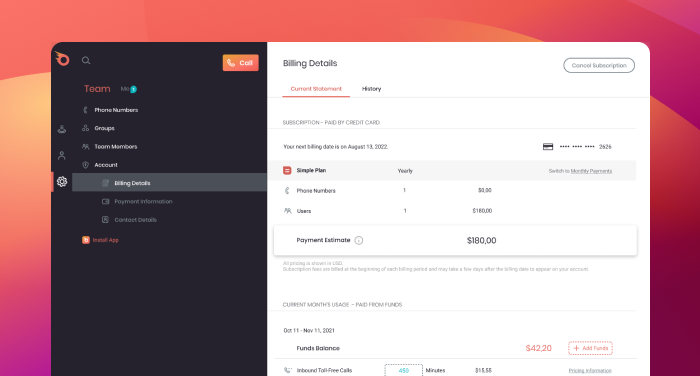
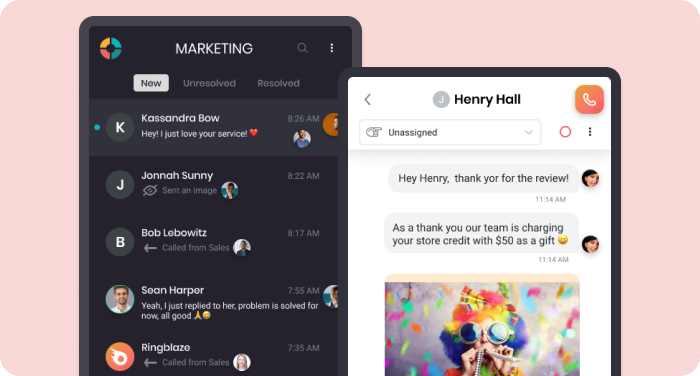

When we created Ringblaze, we had small businesses in mind – especially small businesses that run a customer service team. Such teams work in shifts and share workloads, so it’s often important for them to have tools for collaboration that make it much easier for everyone to stay in the loop.
That’s why Ringblaze features a team collaboration dashboard where you can leave comments on calls, set reminders, and assign people with calls to make the whole process more efficient. That way, all agents can pick up the slack easily and share information within the team.
In addition to this advanced feature, Ringblaze offers a lot of typical VoIP features like international calling, call recording, free minutes, call history, etc. One more important thing to mention – with Ringblaze, all calls are free for your customers, regardless of where they’re calling from.

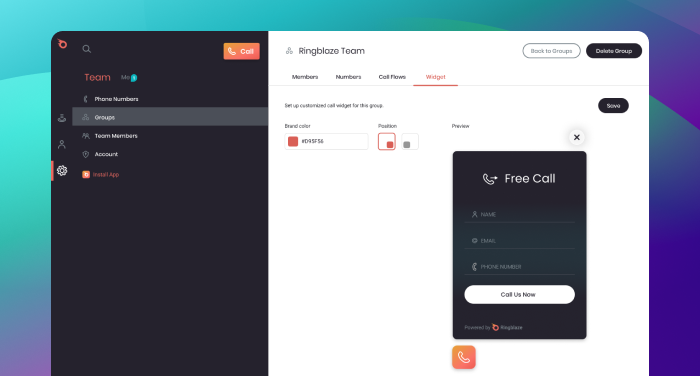
So, sign up for Ringblaze and check out some of these features!
Google Voice

A great thing about Google Voice is that it’s free – but only for individuals. So, if you’re interested in a VoIP solution for your business, this won’t matter too much, as you’ll have to go for one of the paid plans that range from $10 to $30 per user per month.
Much like Ringblaze, Google Voice offers a lot of useful VoIP features like free minutes and texts, call recording (although it’s not available in all plans), and call forwarding. Unfortunately, making calls from abroad is currently only available in 11 countries, so if that’s a big deal, you might want to consider some of the Google Voice alternatives we’ve explored.
What makes Google Voice stand out are the advanced integrations with the rest of the G Suite – if you’re at home in this ecosystem and you often use Hangouts, Meet, Docs, and other tools from this pack, you’ll find Voice useful.
Ooma
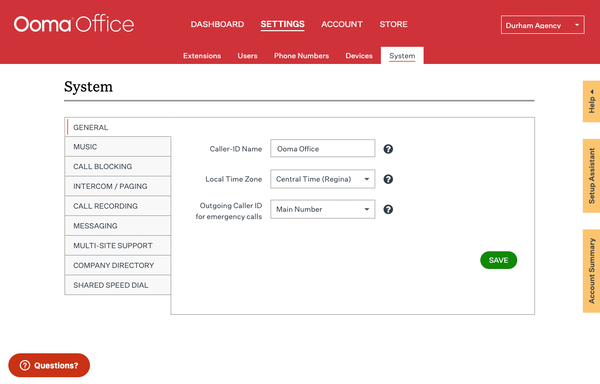
Another big name in the industry, Ooma is a popular choice used by households and businesses all over the U.S.
It offers a lot of interesting features like a virtual receptionist, call recording, and enhanced call blocking. Perhaps the most interesting feature with Ooma is the Ring Groups feature. With it, you can set up devices from an entire team to ring at the same time. In practice, this means that when a customer is calling tech support, all you tech support agents will see the call at the same time, increasing the chance that your customer will be attended to quickly.
Ooma does come with some potential extra charges like Federal Universal Service Charge, a 911 service fee, and others. So, read carefully before making a decision or check out our list of Ooma alternatives.
Reasons why you should opt for a VoIP call center
By now, some of the more obvious advantages of VoIP over landlines are probably more clear to you, but let’s get over some of them in greater detail.
Team collaboration
VoIP phone systems often come with software – either desktop, phone, or even browser apps. These apps can make your agents’ lives much easier and allow them to keep a better track of customer journeys, both from a sales and a customer support standpoint.
Using this software provides your customers with a better experience, as their cases will be followed thoroughly and they’ll often get through to your agents easily.
Advanced features
Even in the least expensive pricing plans, VoIP providers include some advanced features like call tracking, virtual attendants, and hold music. Some of these features can help you improve your brand image, while others will simply streamline the process of customer support and make your employees’ jobs easier and improve overall employee engagement.
The more advanced features like the “click to call” feature that comes with Ringblaze are virtually impossible to get with your landline provider. Not to mention the technical downside of landlines – with VoIP you can have video calls where you can share screens to make customer support even more efficient and pleasant for your users.
Easy to set up
Most VoIP business phone systems are extremely easy to set up, even if you’re not particularly tech-savvy. The setup process usually involves installing a program in a few clicks and entering some basic information. The providers often take an active effort to guide you through the process and make sure you’ve set up the most important functions, leaving you to explore the more advanced settings on your own.
VoIP systems usually come with no additional equipment, so you don’t have to bother reading complicated instructions or untangling cables. Even when you do have to set up a device, it’s as simple as sticking a cable into a jack, pressing a button, and waiting for the device to install the system
Flexibility
Since they don’t require a separate device or a nationally registered landline to work, VoIP phone systems are incredibly flexible. You can run your customer support or sales team from anywhere, especially if you have a non-fixed VoIP number. Your team can even work from home, which seems to be getting more important as 2023 is coming to an end.
You can scale up or down with little effort – it can take only a few clicks to add a new line or remove an old one.
VoIP systems evolve with your business and you can customize them at any point in your enterprise’s lifetime.
Possible savings
Finally, choosing a VoIP number over a landline can help you save money.
Not to get too technical, but the very nature of landlines makes long-distance calls expensive – to make such a call, a lot of infrastructure needs to be used and maintained. This infrastructure is controlled either by governments or large telephone companies that depend on charging these calls to create revenue.
VoIP pricing plans rarely depend on your minutes and often come with unlimited free calls. If you choose your plan right, you can save a lot of resources annually with VoIP services.
VoIP call center: Final word
If you’re considering switching from a landline to a VoIP business phone system, we hope this article helped you clear out some doubts.
Guiding your business into 2023 means making smart decisions that rely on new technology that simplifies the customer service process and cuts costs. VoIP fits right into this category, so start researching and give your agents a tool they can rely on!




